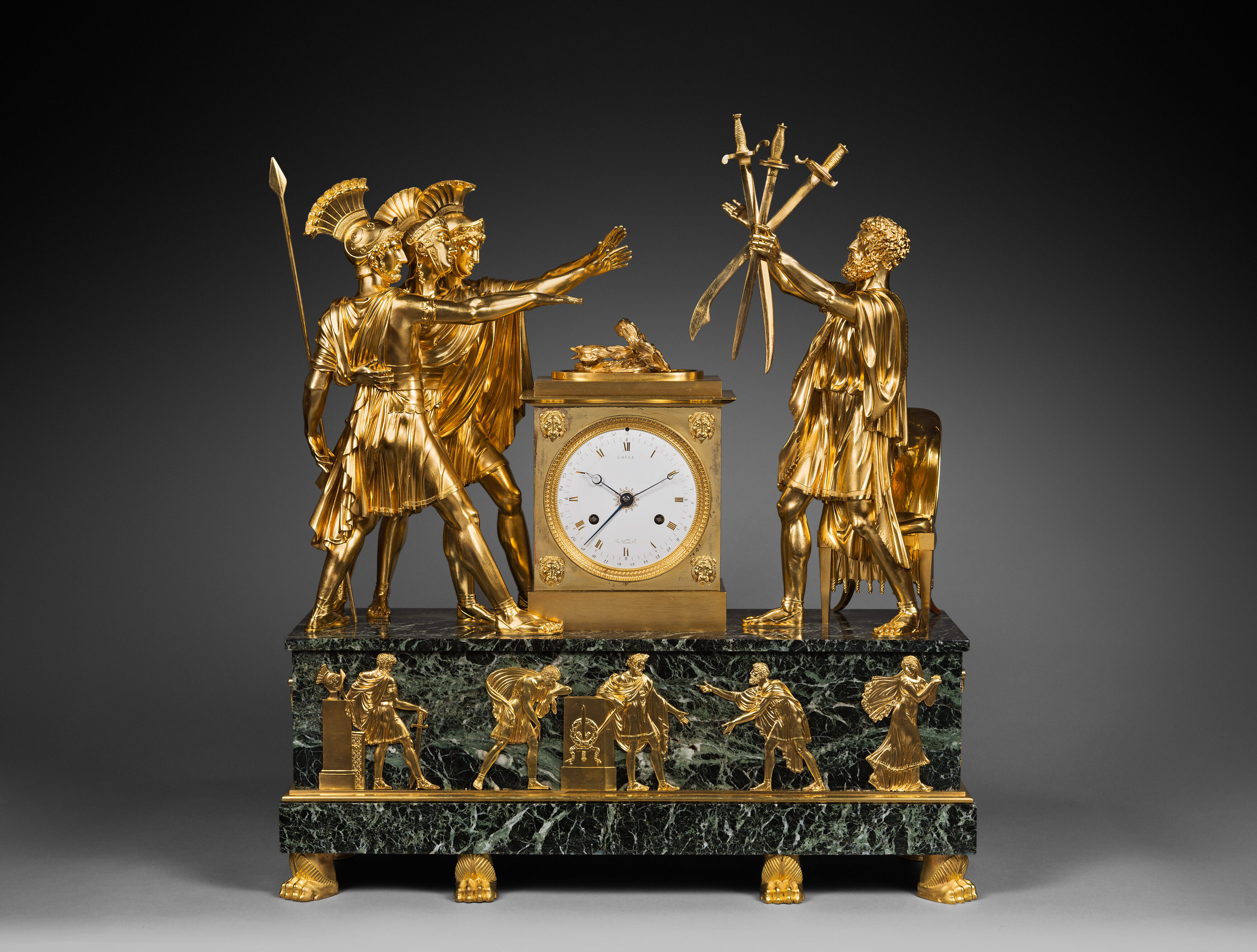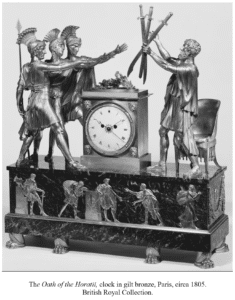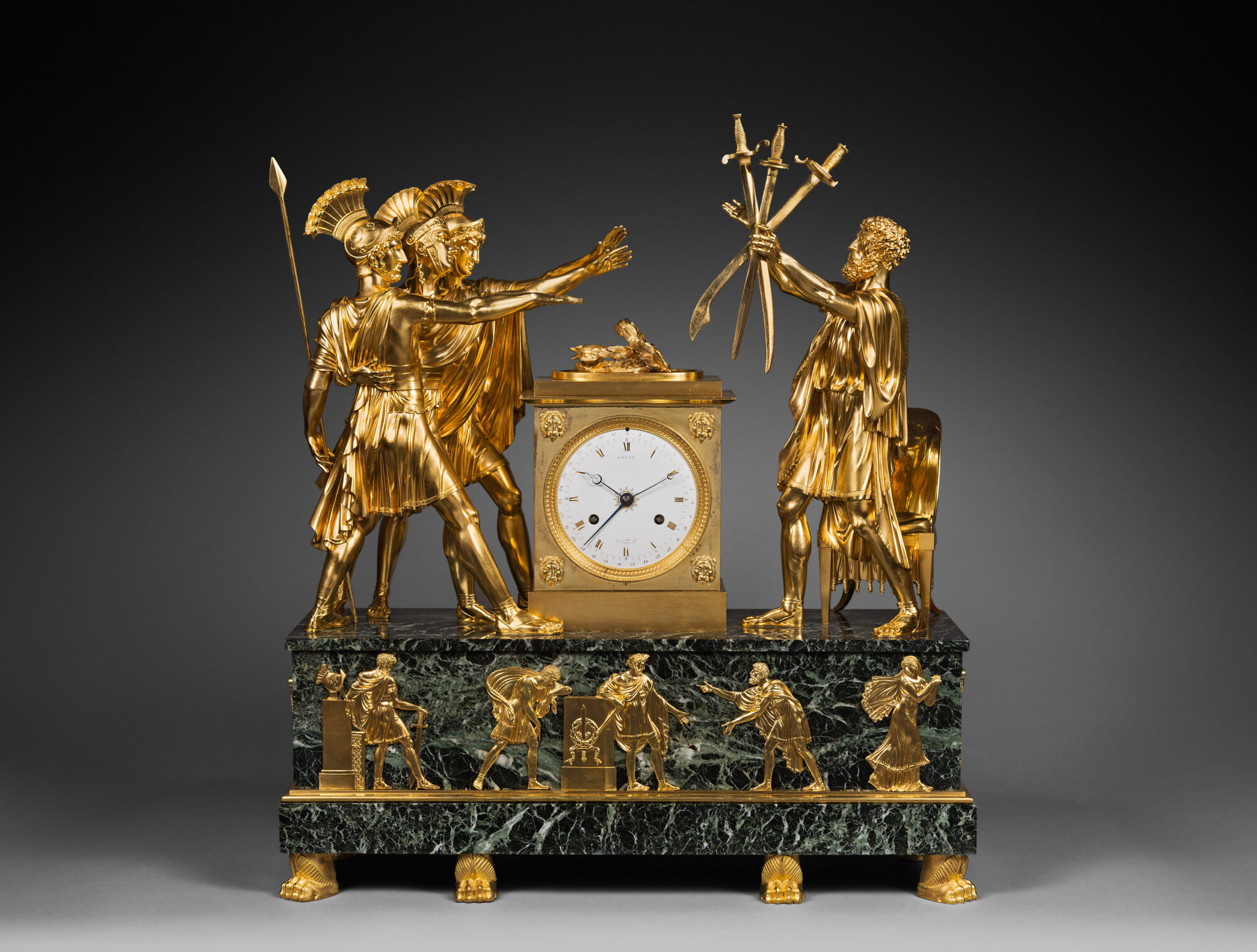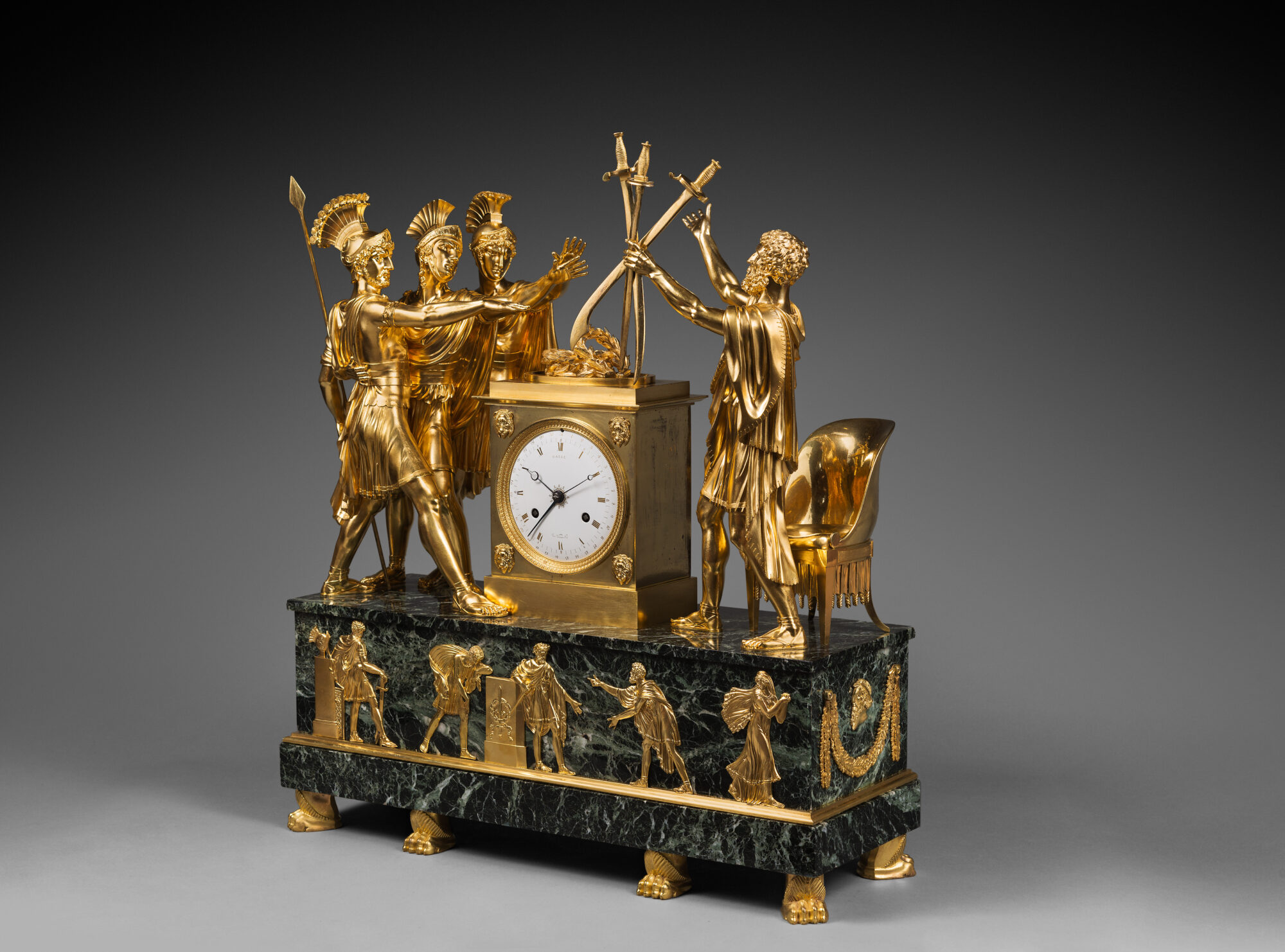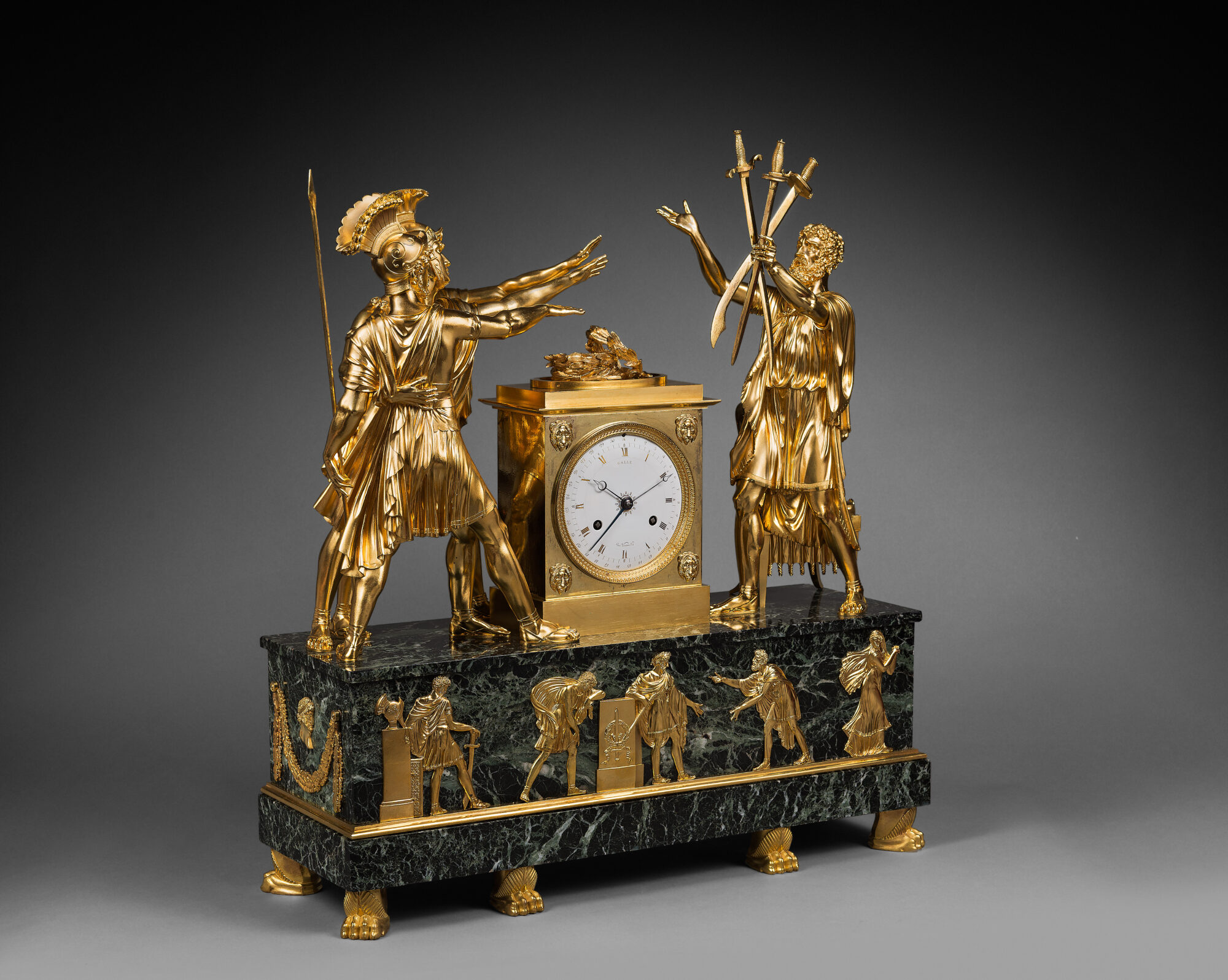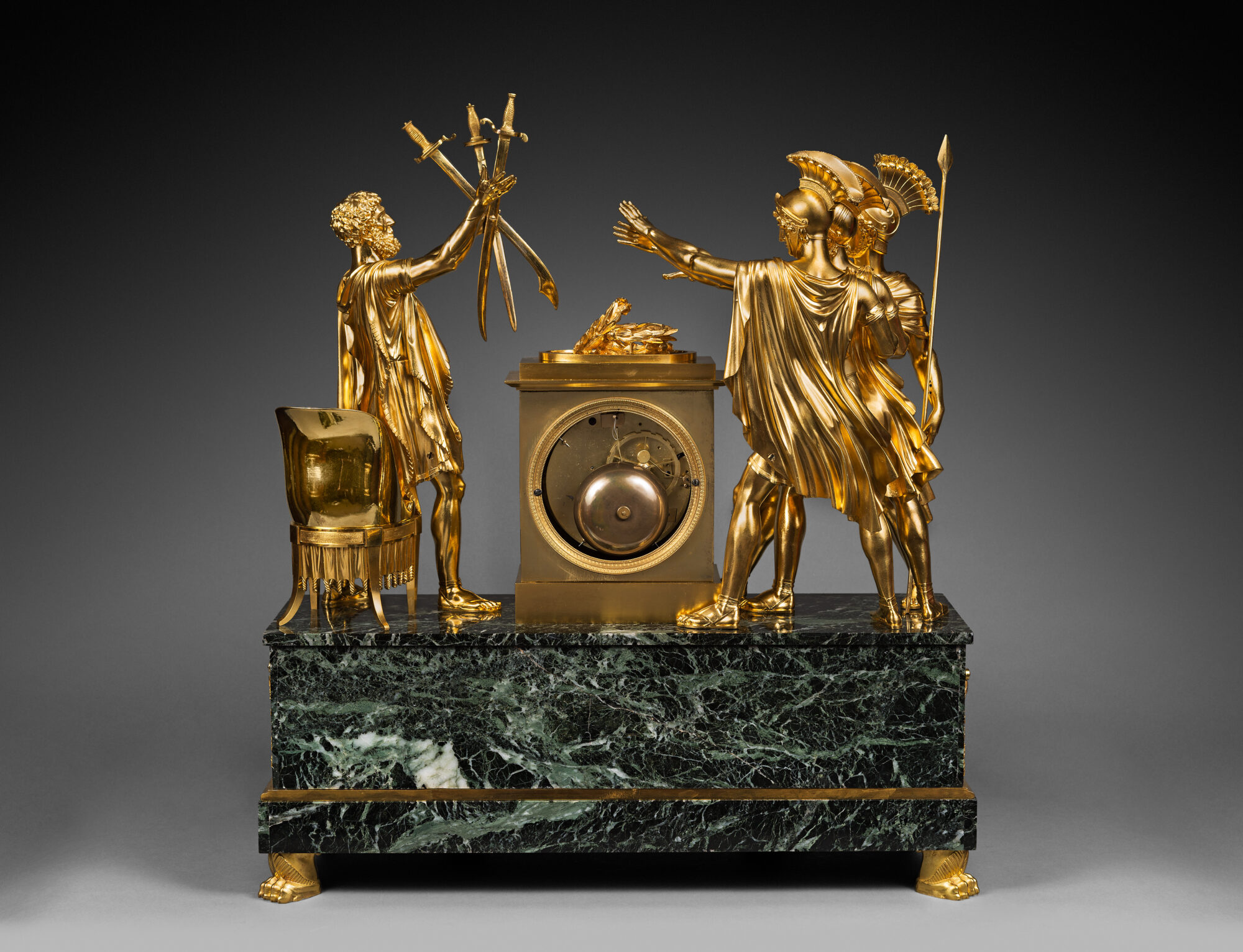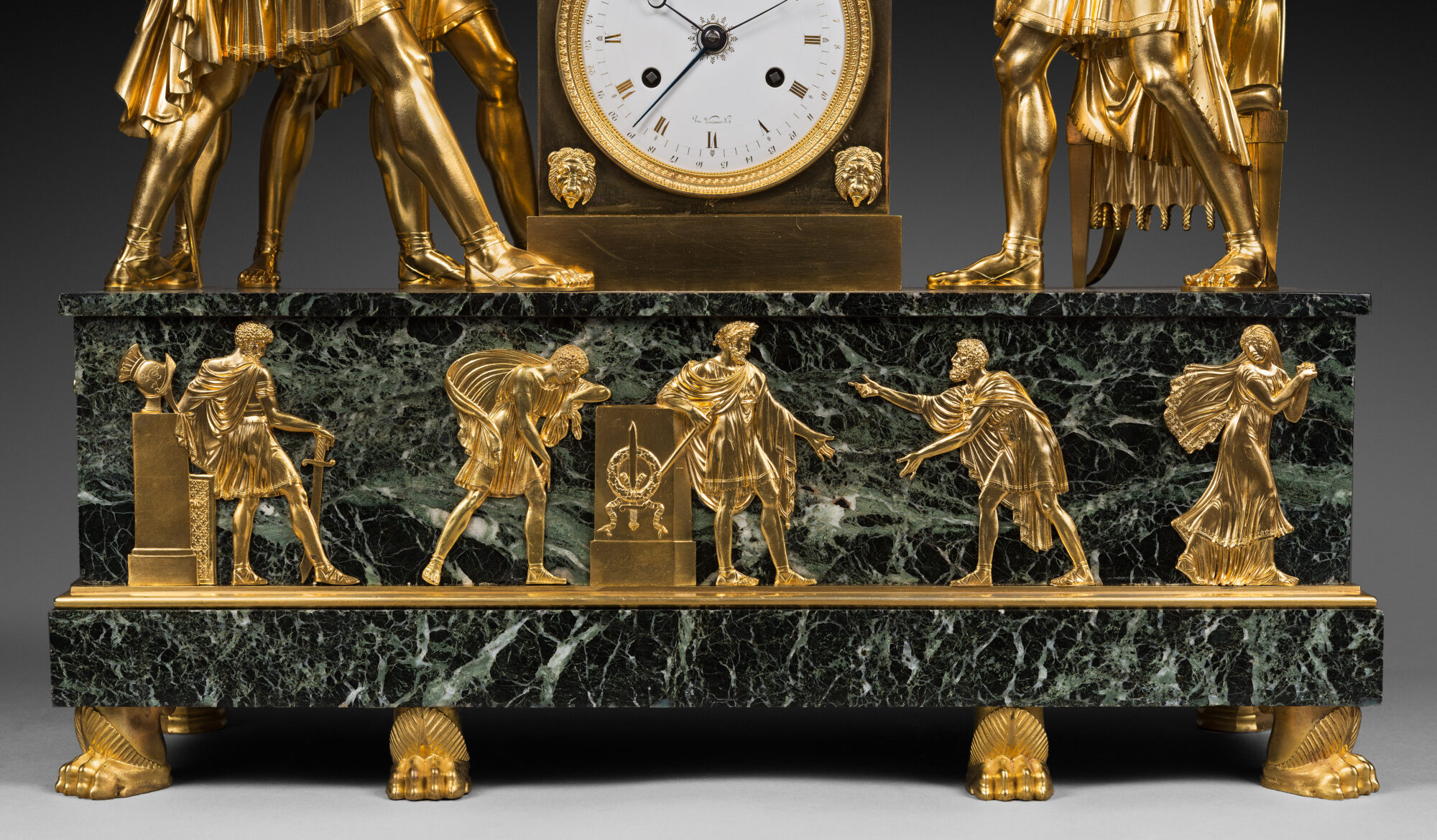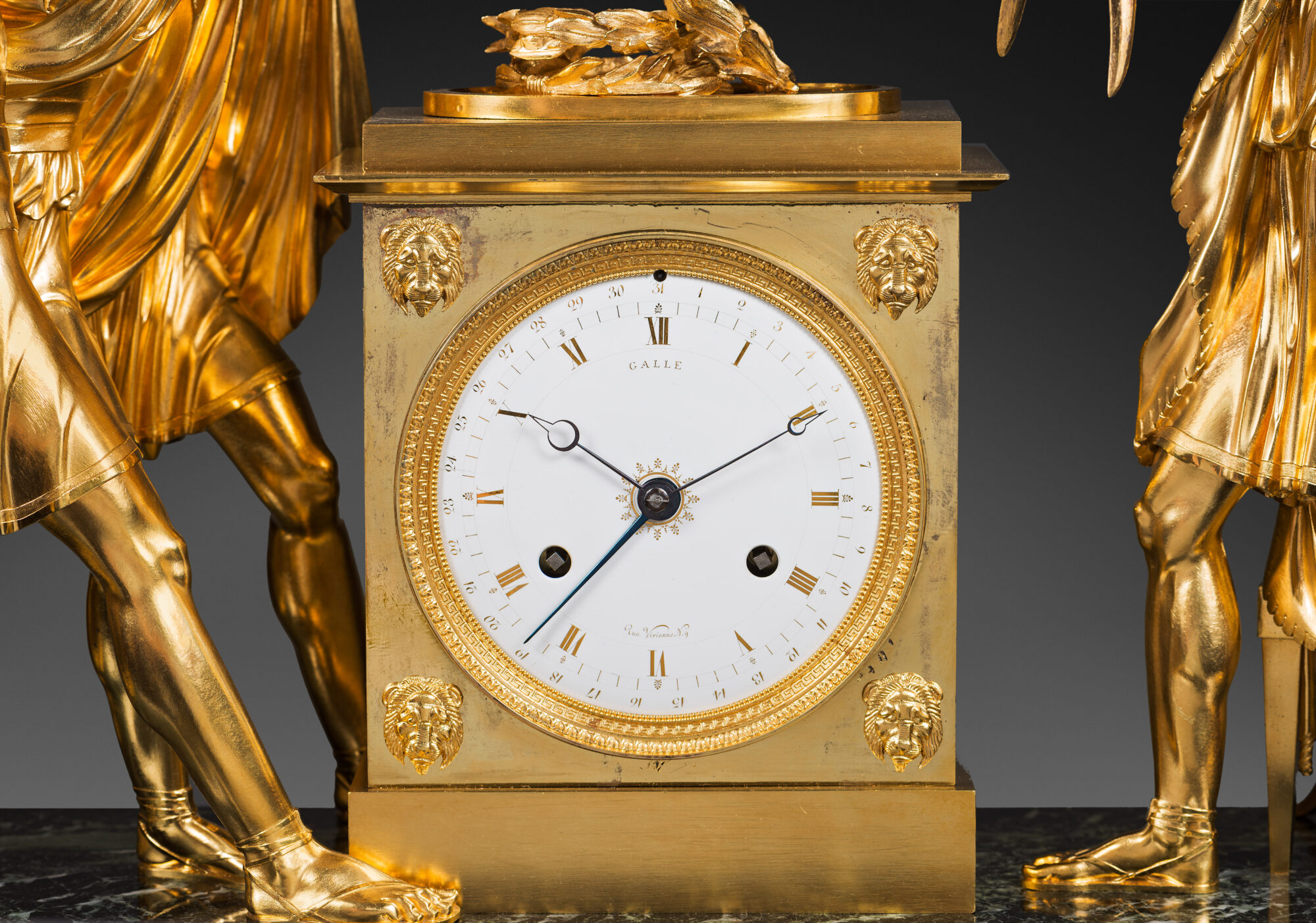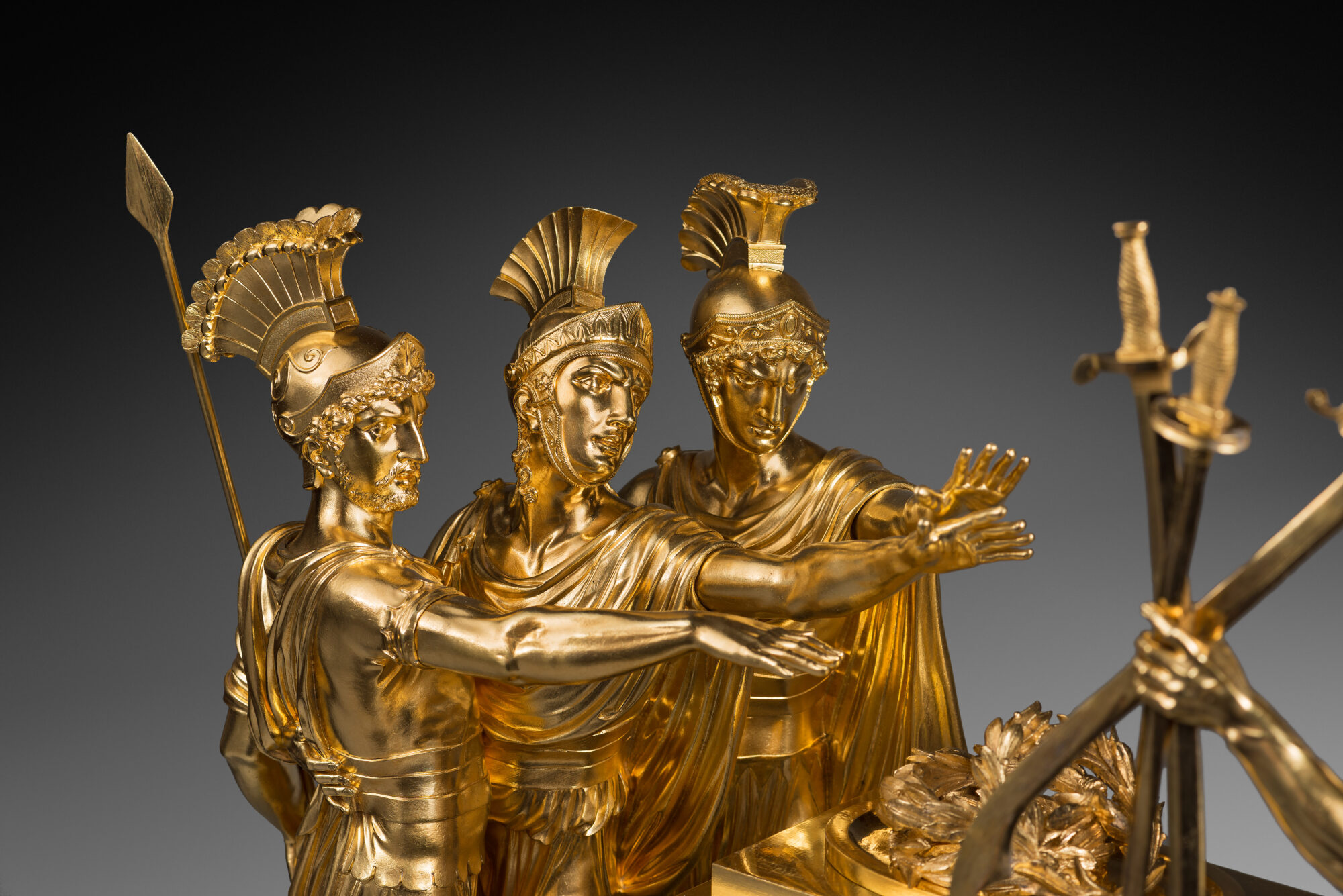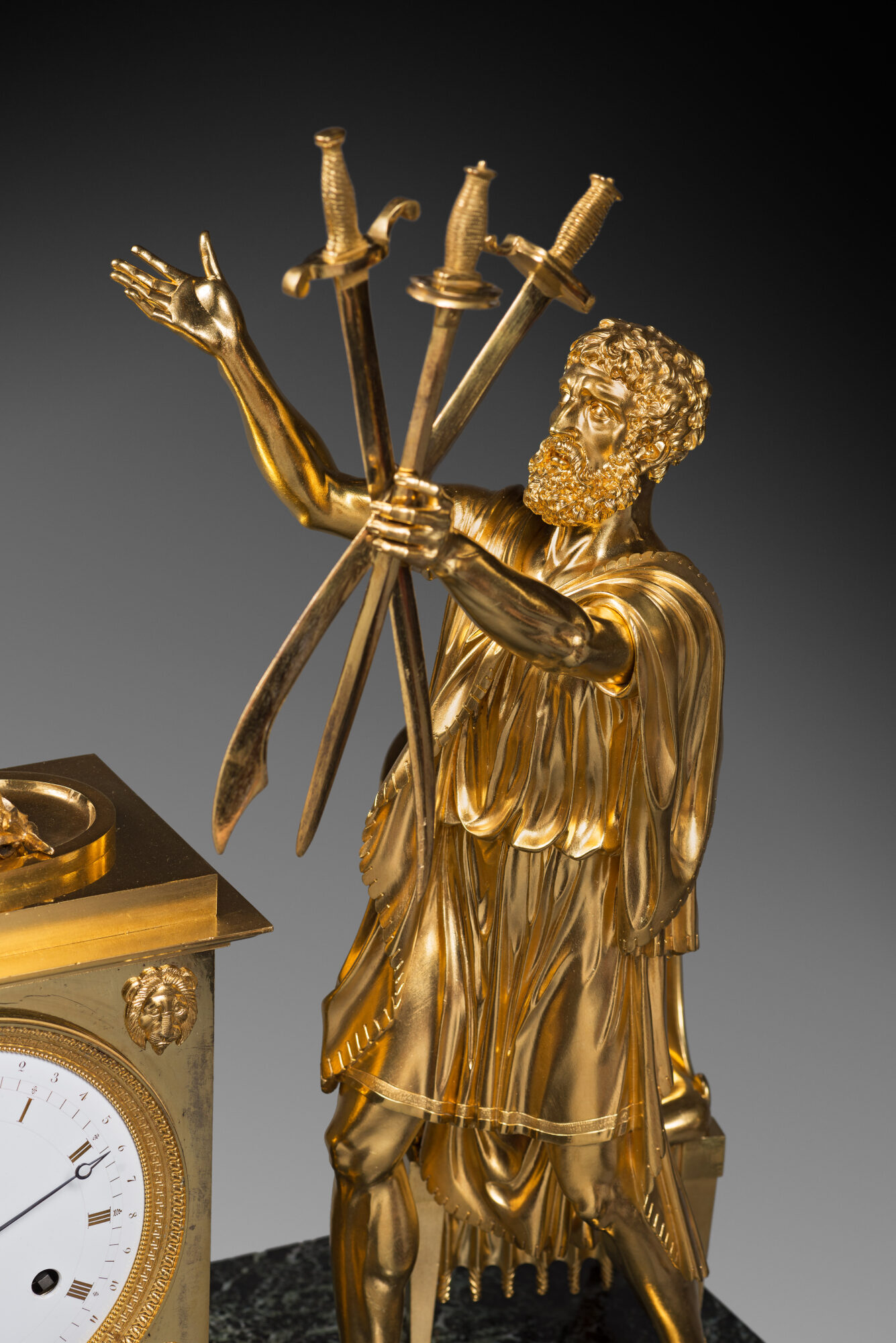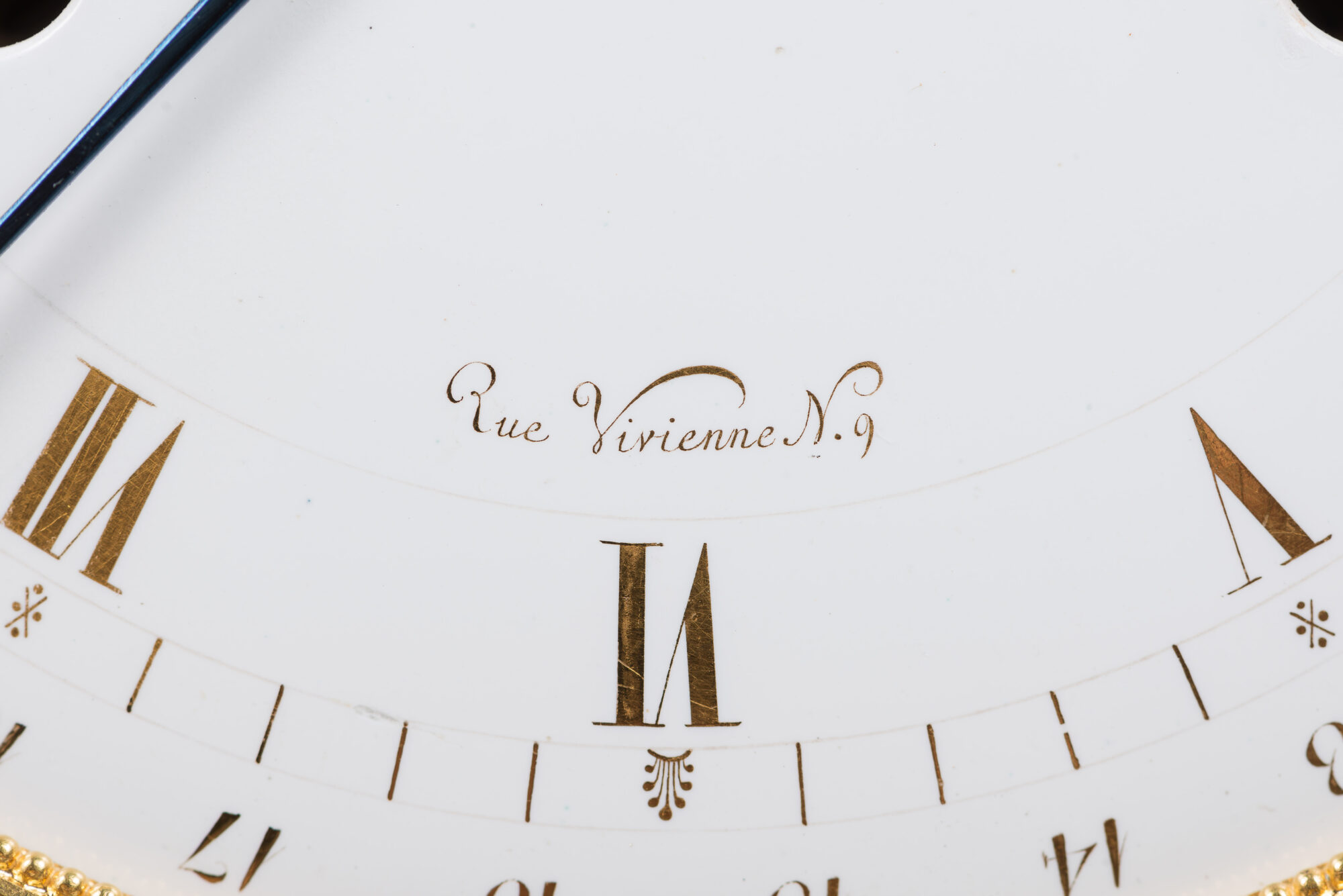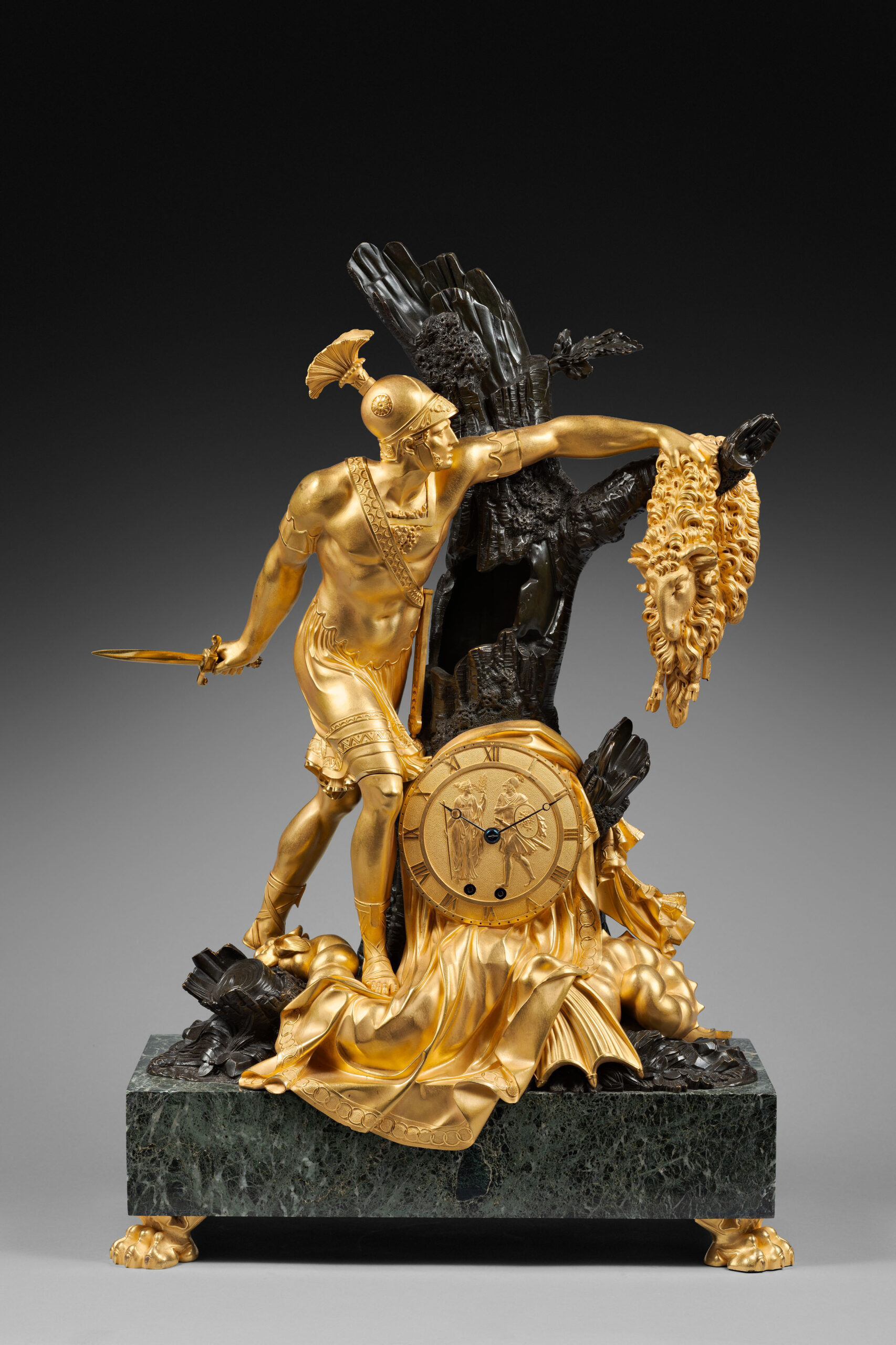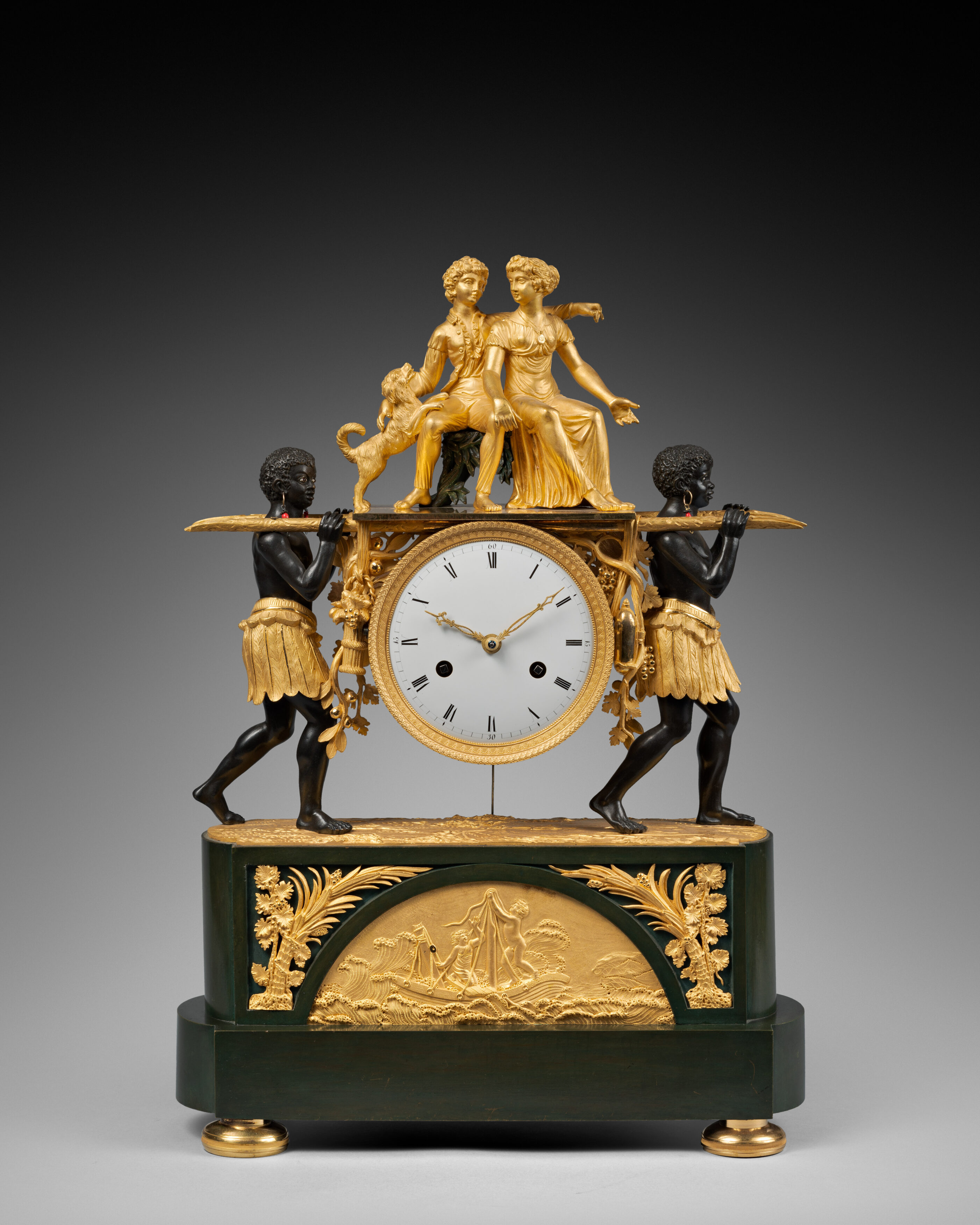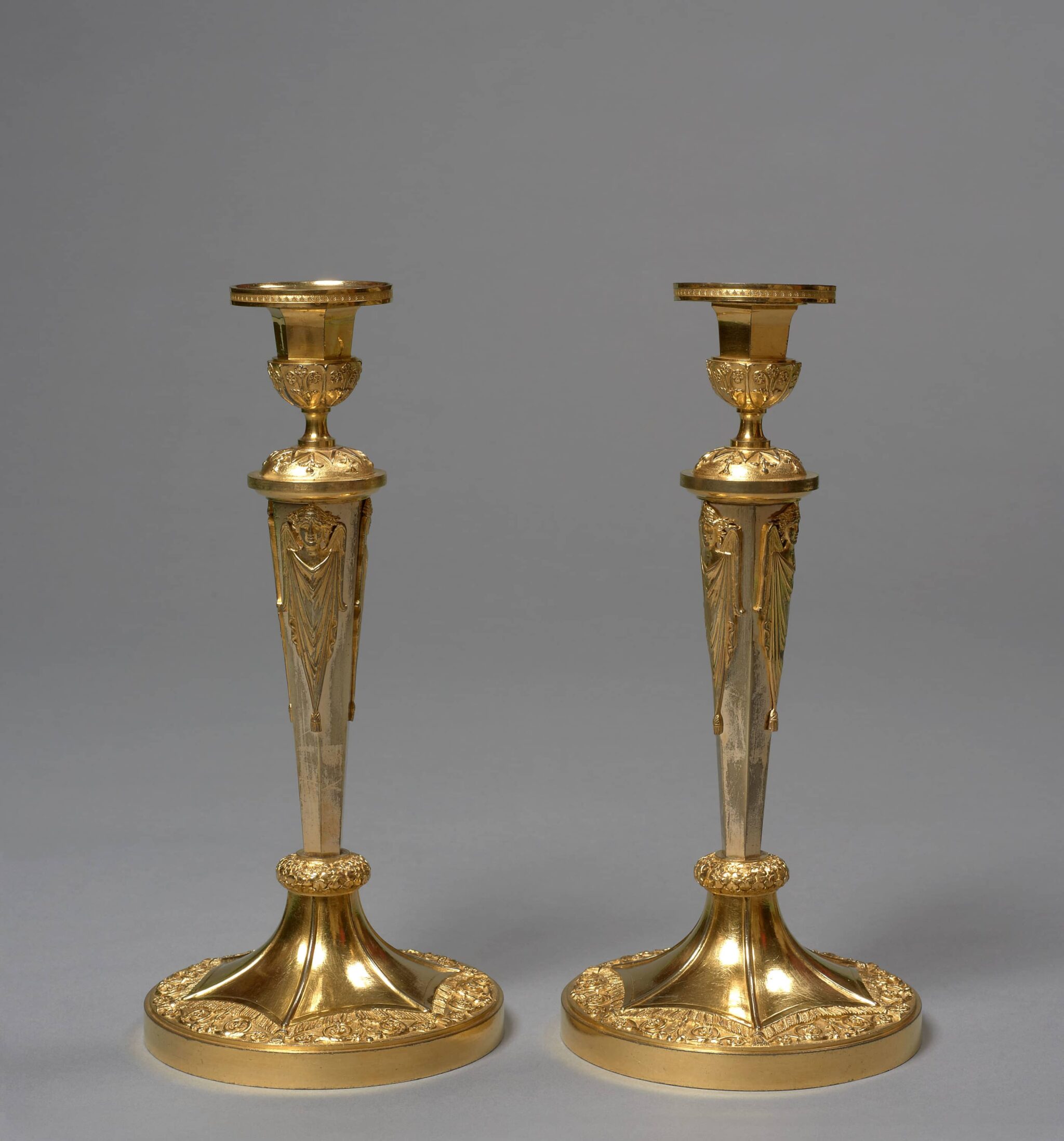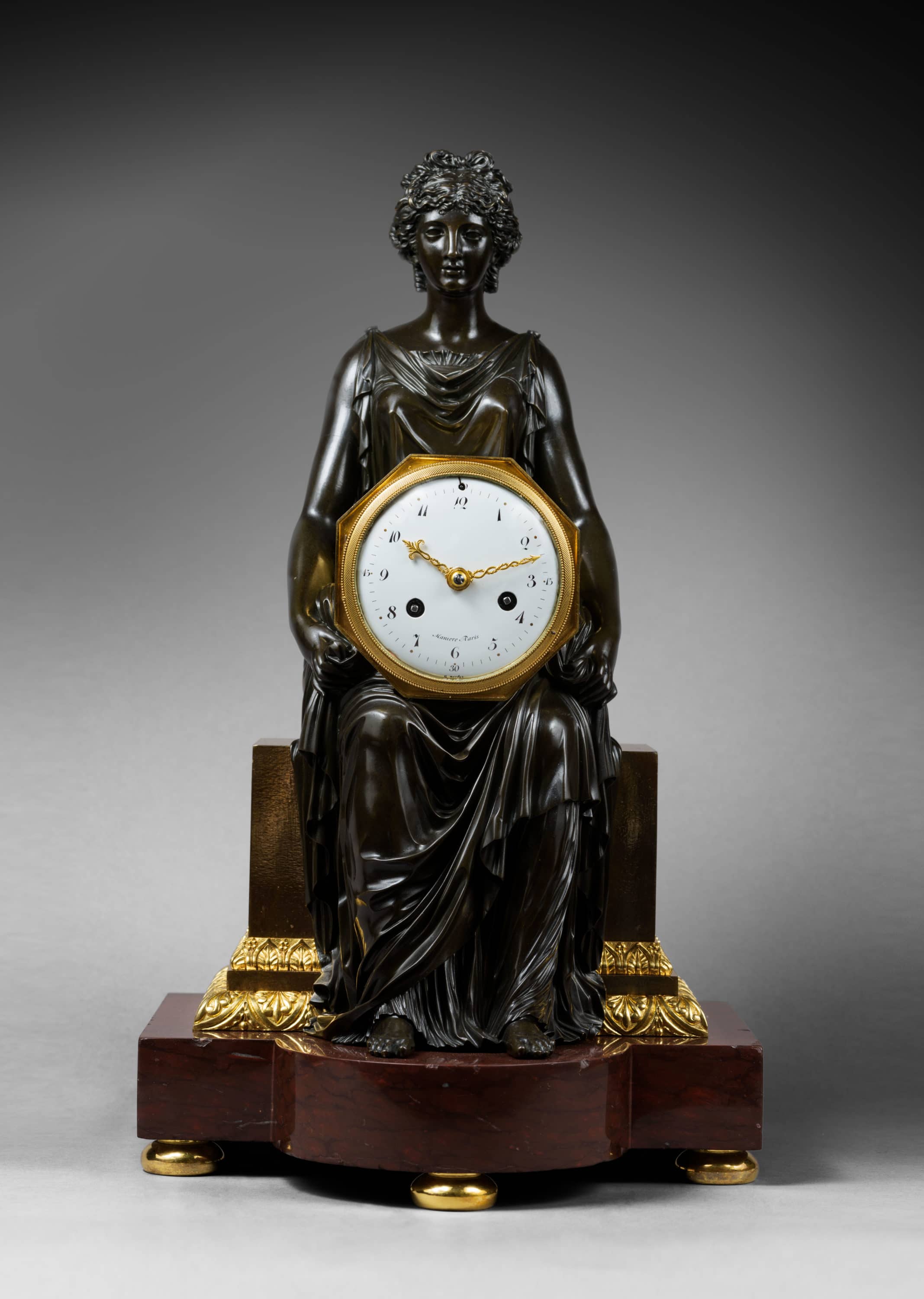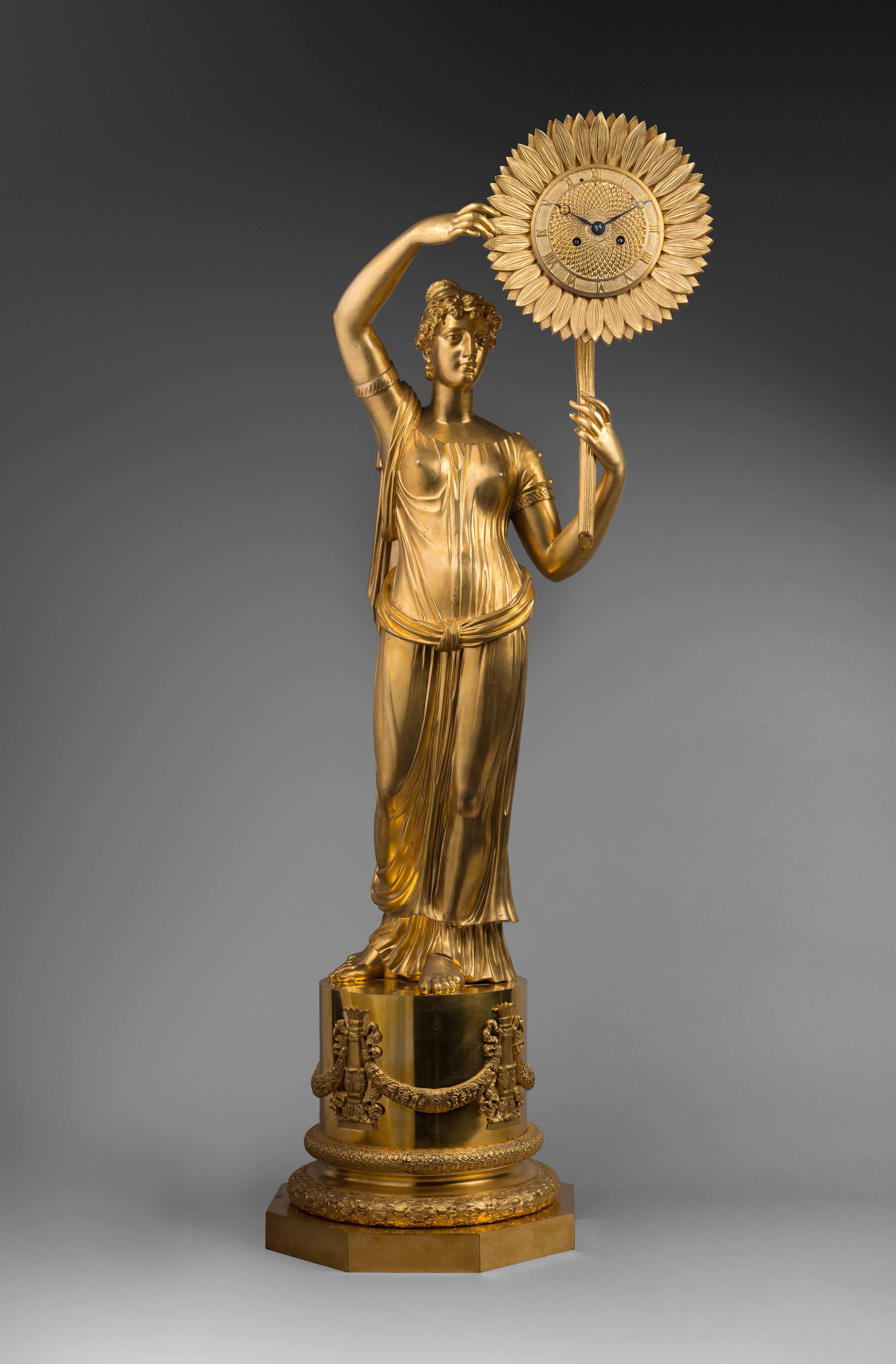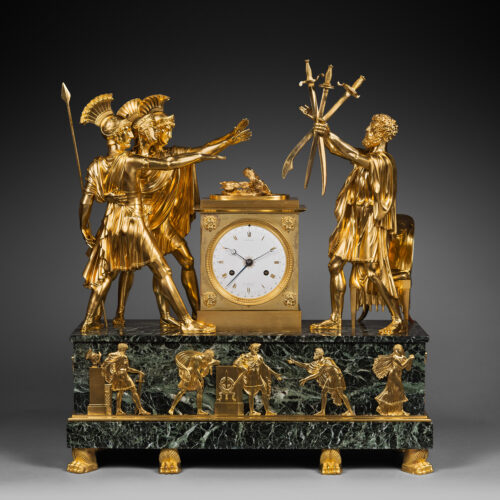Important bronze mantel clock very finely chiseled and gilded with matt gold and green marble
” The Oath of the Horatii “
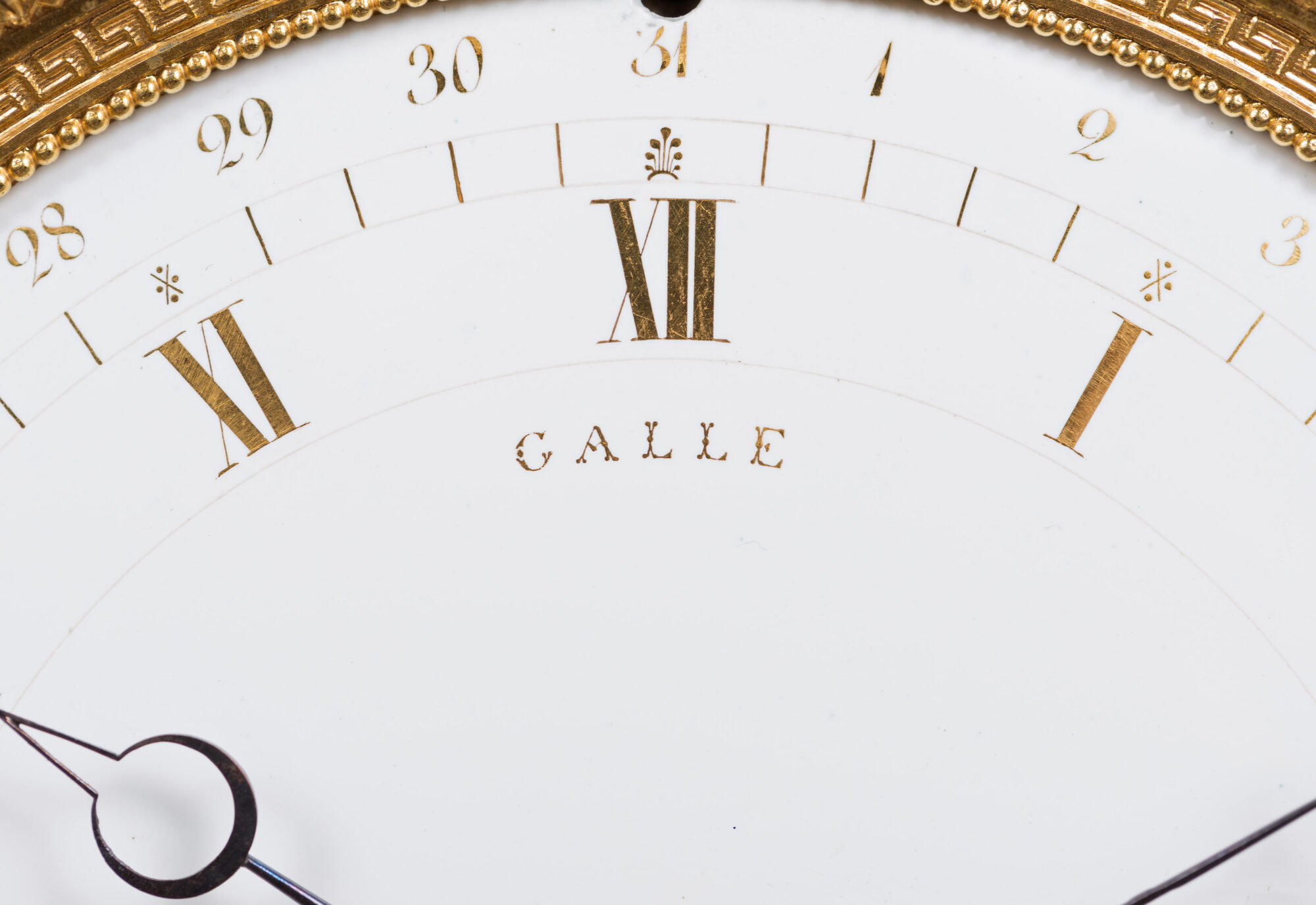
The dial signed “Galle/Rue Vivienne n° 9 ” by the workshop of Claude Galle
The composition inspired by the painting of Jacques-Louis David (1748-1825)
Paris, Empire period, circa 1805
The round white enamel dial with gold highlights is signed “Galle/Rue Vivienne n° 9 ”; it indicates the Roman numeral hours, the minutes graduations, and the Arabic date by means of three blued steel hands, two of which are Breguet hands. The hour and half-hour striking movement is housed in a rectangular case that is adorned with lions’ head spandrels; on it are placed three laurel wreaths. On either side there are four figures – to the right, a group of three Roman warriors wearing short tunics, sandals, and plumed helmets, one of which is holding a lance. They represent the three Horatii, who are swearing before their father Tatius, who is facing them, to defend Rome from the Curiatii. The patriarch holds their three swords in his left hand and is standing before a neoclassical armchair with back feet in the form of sabers and a backward-leaning back. The high green marble base is richly adorned with finely chased gilt bronze motifs that are related to the theme of the clock: on the façade, Tatius is welcoming the only surviving son who has come back from the fight, while his daughter Camille, troubled, flees to the left while turning back. Two male figures represent the two sons who died in combat. On the sides are leafy garlands suspended from roundels that are centered by a male profile. The clock is raised upon six lions’ paw feet that emerge from detailed waterleaves.
Discover our entire collection of antique mantel clocks for sale online or at the gallery.
The present clock, which may be considered one of the masterpieces of the Parisian decorative arts of the Empire period, is illustrative of the finest in luxury neoclassical horology, encouraged by Emperor Napoleon and appreciated by the influential Parisian collectors of the early 19th century. Its proportions, its perfectly balanced composition, the exceptional quality of the chasing and gilding of its bronzes, as well as its iconography, a direct link to classical Roman mythology, make it one of the clocks that most closely approaches the Imperial ideal as applied to the decorative arts décoratifs of the period. Its remarkable composition was inspired by the well-known painting that Jacques-Louis David presented at the Salon of 1785 and which is today in the Louvre Museum. The painting illustrates “The Oath of the Horatii”, an important episode in the story of the founding of ancient Rome. The scene illustrates the moment when the Horatii brothers promise their father to defend Rome from the three Curiatii, who were valiant warriors from the neighboring and rival city of Alba, and were also married to their sisters. When the combat was over, only the eldest of the three Horatii brothers survived, and was cursed by his own sister, Camille, because her husband had been killed. A three-dimensional interpretation of David’s painting, the composition is sublimated by the magnificent figure of the father who raises the swords of his sons to the skies, imploring the gods to grant them victory.
The present important clock illustrates this episode of the founding of the city of Rome. Today only a few similar clocks are known, which display certain variations in the general composition. Among them, one clock, which dates from slightly later, since it is signed “Le Roy horloger du Roi”, is illustrated in the exhibition catalogue French Clocks from the Age of Napoleon, Phoenix Art Museum, 1998-1999, p. 7-8). A second example is shown in L. Montanés, Catalogo ilustrado del Museo de relojes, Fundacion Andrés de Ribera, Jerez de la Frontera, 1982, p. 93, catalogue 150. Four further clocks that are identical to the present clock are all in important public and private collections around the world. The first, whose dial is signed “Sirost à Paris”, is on display in the anti-chamber of Prince Frederick Adolph in the Royal Palace of Stockholm (see H. Groth, Châteaux en Suède, Intérieur et mobilier néo-classiques 1770-1850, Thames & Hudson, London, 1990, p. 23, fig. 7). The second, purchased in 1809 by the Prince Regent, is part of the Royal British Collection (see C. Jagger, Royal Clocks, The British Monarchy and its Timekeepers 1300-1900, London, 1983, p. 143, fig. 195). The third, whose dial is signed Porchez and was in the collection of Prince Murat in the Elysee Palace, is now in the Mobilier national in Paris (illustrated in M-F. Dupuy-Baylet, Pendules du Mobilier national 1800-1870, Editions Faton, Dijon, 2006, p. 108-109, catalogue n° 46). The last such clock, which in 1810 stood in the Grand Salon de la Reine in the Munich Residenz, is illustrated in L. de Gröer, Les arts décoratifs de 1790 à 1850, Office du Livre, Fribourg, 1985, p. 286, fig. 545 (see also H. Ottomeyer et P. Pröschel, Vergoldete Bronzen, Die Bronzearbeiten des Spätbarock und Klassizismus, Munich, 1986, p. 367, fig. 5.13.5).
Finally, two clocks by Galle, which represent the same theme and appear to be similar in every way to the present clock, were mentioned as of the early 19th century, in the homes of important Parisian collectors. One of these was mentioned in the 1810 probate inventory of the first wife of Nicolas-Charles-Marie Oudinot, Duke of Reggio, Marshal of the Empire: “A large striking clock bearing the name of Galle in its square shaped case, placed on a base of green marble and adorned with four figures representing the oath of the Horatii, said base decorated with analogous figures on the same subject, the whole in gilt bronze and copper in matte gold, 2100 francs”. A second clock was mentioned in 1813 when the collection of General Jean Andoche Junot, Duke d’Abrantès was estimated: “A clock based on the oath of the Horatii, the movement bearing the name of Galle à Paris, with figures and ornaments in mat gilt copper, on a base of green marble with gilt copper claws below, 1200 francs”.
Claude Galle (1759 - 1815)
One of the foremost bronziers and fondeur-ciseleurs of the late Louis XVI and Empire periods, Claude Galle was born at Villepreux near Versailles. He served his apprenticeship in Paris under the fondeur Pierre Foy, and in 1784 married Foy’s daughter. In 1786 he became a maitre-fondeur. After the death of his father-in-law in 1788, Galle took over his workshop, soon turning it into one the finest, and employing approximately 400 craftsmen. Galle moved to Quai de la Monnaie (later Quai de l’Unité), and then in 1805 to 60 Rue Vivienne.
The Garde-Meuble de la Couronne, under the direction of sculptor Jean Hauré from 1786-88, entrusted him with many commissions. Galle collaborated with many excellent artisans, including Pierre-Philippe Thomire, and furnished the majority of the furnishing bronzes for the Château de Fontainebleau during the Empire. He received many other Imperial commissions, among them light fittings, figural clock cases, and vases for the palaces of Saint-Cloud, the Trianons, the Tuileries, Compiègne, and Rambouillet. He supplied several Italian palaces, such as Monte Cavallo, Rome and Stupinigi near Turin.
In spite of his success, and due in part to his generous and lavish lifestyle, as well as to the failure of certain of his clients (such as the Prince Joseph Bonaparte) to pay what they owed, Galle often found himself in financial difficulty. Galle’s business was continued by his son after his death by his son, Gérard-Jean Galle (1788-1846). Today his work may be found in the world’s most important museums and collections, those mentioned above, as well as the Musée National du Château de Malmaison, the Musée Marmottan in Paris, the Museo de Reloges at Jerez de la Frontera, the Residenz in Munich, and the Victoria and Albert Museum in London.
Discover our entire collection of rare clocks on La Pendulerie Paris.
